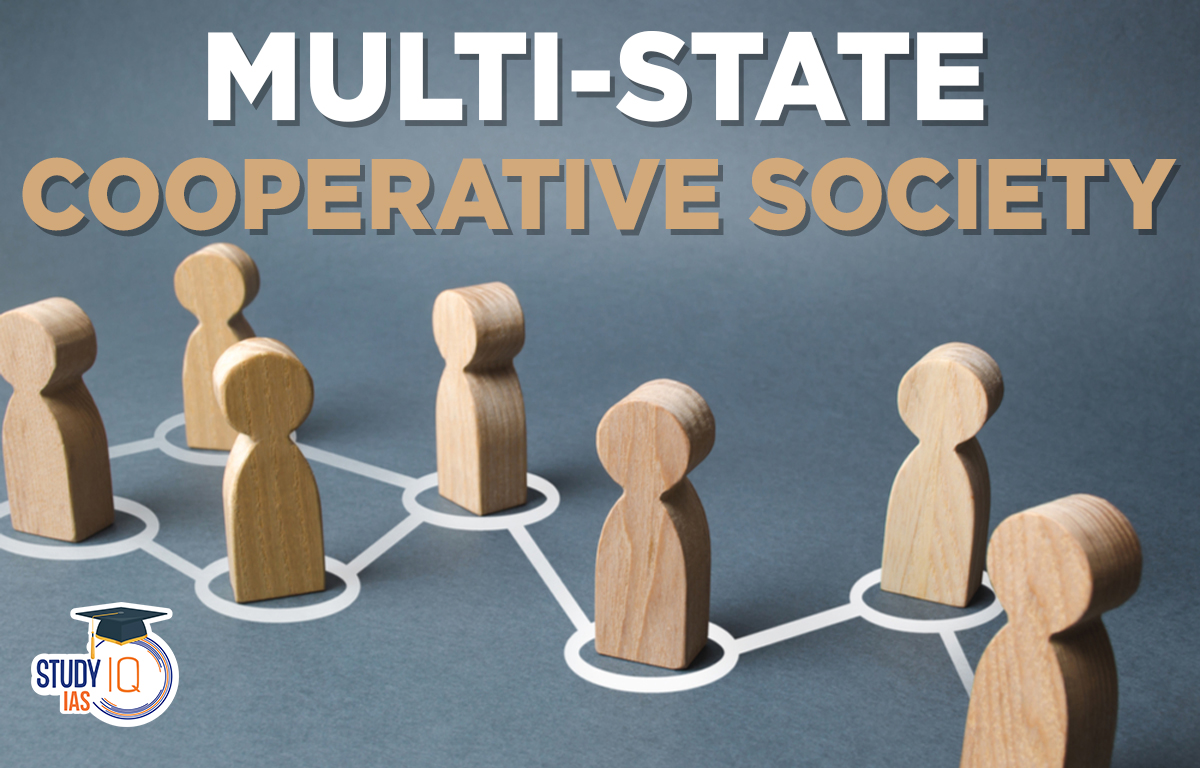Table of Contents
Multi-State Cooperative Society Background
- About Cooperatives: These are the organisations formed at the grassroots level by people to harness the power of collective bargaining towards a common goal.
- Their members are largely from rural and agricultural backgrounds.
- In agriculture, cooperative dairies, sugar mills, spinning mills etc are formed with the pooled resources of farmers who wish to process their produce.
- Indian Constitution: Article 43B of the Constitution inserted by the 97th Amendment says that “states shall endeavour to promote voluntary formation, autonomous functioning, democratic control and professional management of cooperative societies”.
- Cooperative is on the state list, which means state governments can govern them.
- A majority of the cooperative societies are governed by laws in their respective states, with a Cooperation Commissioner and the Registrar of Societies as their governing office.
- Multi-State Co-operative Societies Act, 2002: It was enacted by Parliament to consolidate different laws at the central level.
- Multi-State cooperatives are societies that have operations in more than one state– for instance, a farmer-producers organisation which procures grains from farmers from multiple States.
- There are close to 1,500 MSCSs registered in India, the highest number being in Maharashtra.
- Ministry of Cooperation was established in 2021, to provide a separate administrative legal and policy framework for strengthening the cooperative movement in the country.
- According to the Ministry of Cooperation, there are around 8.5 lakh cooperatives in India, with about 1.3 crore people directly attached to them.
- As per NCUI data from 2018, the percentage of cooperative members in proportion to the total population increased from 3.8% in 1950-51 to 22.2% in 2016-17.
Multi-State Cooperative Society Significance
- These societies would focus on exports, organic farming and exports, benefiting farmers.
- They will help in achieving the goal of Sahakar-see-Samriddhi through the inclusive growth model of cooperatives.
- They will be registered under the Second Schedule of the MSCS Act, 2002.
- PACS to APEX: Primary to national level cooperatives societies including primary societies, district, state and national level federations, multi-state cooperative societies and Farmers Producer Organisations (FPOs) can become its Members.
- All these cooperatives will have their elected representatives on the Board of the society as per its bye-laws.
1. About National Level Multi-State Cooperative Organic Society
- Aim: Providing thrust to organic products from the cooperative sector by acting as an umbrella organisation for managing various activities related to the organic sector.
- Functions of the Society
- Managing various activities related to the organic sector by providing certified and authentic organic products.
- Unlocking demand and consumption potential of organic products in domestic as well as global markets.
- Help cooperatives and ultimately their farmer members in getting benefits of the high price of organic products through aggregation, branding and marketing on large scale by facilitating testing and certification at affordable cost.
- Provide institutional support for aggregation, certification, testing, procurement, storage, processing, branding, labelling, packaging, logistic facilities, marketing of organic products and arranging financial assistance to the organic farmers through is members cooperatives including Primary Agricultural Credit Societies/ FPOs.
- Take up all promotion and development-related activities of organic products with the help of various schemes and agencies of the Government.
- Empanel-accredited organic testing labs and certification bodies that meet the criteria specified by the society to bring down the cost of testing and certification.
- facilitate in providing technical guidance, training and capacity building of organic producers and developing and maintaining a dedicated market intelligence system for organic produce.
- Whole of the Government Approach: Support from relevant Ministries especially the Ministry of Commerce and Industry, Ministry of Agriculture and Farmers Welfare, Ministry of Food Processing Industries, Ministry of Health and Family Welfare and Ministry of Development of North Eastern Region (M/Doner) through their policies, schemes & agencies.
2. About National Level Multi-State Cooperative Export Society
- Aim: It will provide thrust to exports from the cooperative sector by acting as an umbrella organisation for carrying out and promoting exports.
- It will help unlock the export potential of Indian cooperatives in global markets.
- It will help cooperatives get benefits of various export-related schemes and policies of different ministries of the Government of India in a focussed manner through the ‘Whole of Government Approach’.
- Inclusive growth model of cooperatives: Members would benefit both by the realization of better prices through the export of their goods and services and also by dividends distributed out of the surplus generated by the society.
- Employment Generation: Higher exports will increase the production of goods and services by the cooperatives at various levels thus leading to more employment in the cooperative sector.
- The processing of goods and enhancing the services to match international standards will also generate additional employment.
- Increased export of cooperative products would, in turn, also promote “Make in India” thus leading to Atmanirbhar Bharat.
Varietal Replacement Rate (VRR)
- It is one of the important factors in realizing higher crop productivity.
- The pace of progress in food production largely depends upon the progress of seed programmes that are able to supply good quality seed of high yielding varieties with superior genetics.
Seed Replacement Rate (SRR)
- SRR is a measure of cropped area covered with quality seed.
- Hence SRR is having a direct bearing on productivity augmentation and enhancement in farmers’ income and is one of the means for achieving doubling the farmers’ income.
About National Level Multi-State Seed Cooperative Society
- Function: It will act as an apex organization for production, procurement, processing, branding and storage among other services for quality seeds.
- Aim: It will focus on strategic research and development and will also look to develop a system for the preservation and promotion of indigenous natural seeds.
- It will involve all forms of cooperative structures and all other means to increase the SRR, and VRR by ensuring the role of farmers in quality seed cultivation and seed variety trials, production and distribution of certified seeds with a single brand name.
- Significance: The members will benefit both by the realization of better prices by the production of quality seeds, higher production of crops by the use of High Yielding Variety (HYV) seeds and by dividends distributed out of the surplus generated by the society.


 Daily Quiz 19 April 2025
Daily Quiz 19 April 2025
 Vehicle-to-Grid (V2G) Technology and its...
Vehicle-to-Grid (V2G) Technology and its...
 Waqf Act (Amendment) 2025: Key Highlight...
Waqf Act (Amendment) 2025: Key Highlight...





















